- Characteristics of each of the plants
- Useful properties
- Recipes with fennel and dill
- Main differences
Many people think that fennel and dill is the name of a single plant. And it is not surprising, to take even dill vodichku, which is used for discomfort in the stomach - it is prepared from the seeds of fennel. In addition, they are equally popular in the field of cooking, as they have a pleasant bright aroma. But what about the real situation - fennel and dill: what's the difference? Let's understand.
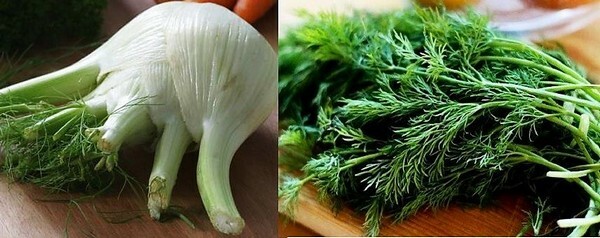
Characteristics of each of the plants
So, let's find out, fennel and dill are the same or not.
Dill
Dill refers to an annual herbaceous plant that belongs to the umbrella family. The length of its stem can be from 0.4 to 1.3 m. The straight, branchy stem is covered with a barely noticeable waxy coating, there are well-marked grooves. Leaves are thin and long, form complex feathers. Towards the end of June, in the flowering period, inflorescences appear at the end of the stem, consisting of small yellowish flowers. At the end of summer, small fruits are formed, painted in a gray-brown color.
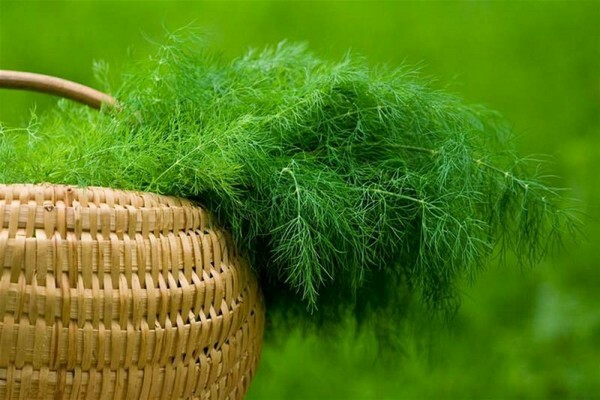
Dill is a frost-resistant plant. Its seeds are immersed in the soil in early spring, and they germinate well even if the substrate temperature is about +6 ° C.The first shoots can be found just a week after planting. Young fragrant leaves begin to collect quite early - when the plant reaches 6-8 cm in height. Thus, this fresh herb appears one of the first on our tables.
The dill is sown usually several times a season, which makes it possible to harvest its rich harvests for the most part of the warm season. He is unpretentious and does not require special care: it is enough only to thin the beds and weed out.
Note! Dill can also be planted between other plants - being in the aisles, it helps to deter some garden pests.
Fennel
Fennel also belongs to the umbrella family, but is a perennial plant. In the conditions of our climate, only some of its species are developing well, and in the best way it feels itself in the subtropical regions.
Fennel is more thermophilic than dill, and therefore it is recommended to plant its seedlings after the end of spring frosts - approximately in April. He has a thin, porous stem, whose height can reach 1.6-1.9 m. The leaves are long and thin, and have the shape of feathers. It blossoms in June with small yellowish flowers, collected in dense inflorescences. In August, the first fruits are tied.
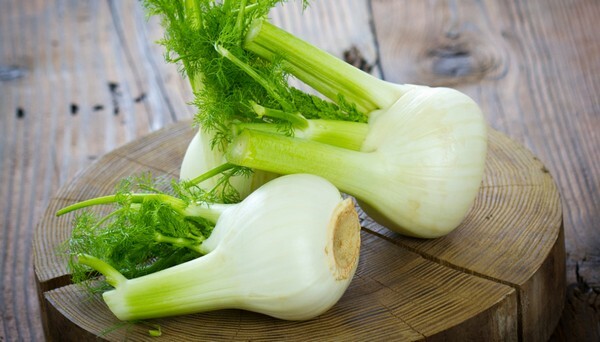
To taste, fennel is a cross between tarragon and peppermint, and its aroma is very bright, spicy. But to get a rich harvest will have to try, since this plant needs abundant watering, constant loosening of the soil and sunlight.
Useful properties of
Considering the differences between fennel and dill, it is impossible to avoid the topic of their useful properties, and there is also an obvious difference. If we talk about fennel, then in the field of medicine are used almost all parts of the plant - and rhizomes, and greens, and fruits. As for dill, for medicinal purposes, mainly seeds are used.
Fennel
Vitamins B, A, E, D and K were found in the green and fennel fruits. In addition, it is rich in amino acids, essential oils, phytosterols and minerals such as copper, calcium, iron and manganese.
This set of biologically active components allows the use of fennel for such problems:
- disorders in the intestine: constipation, bloating, atony, weakening of peristalsis;
- diseases of the bile duct and gallbladder: cholecystitis, the presence of sand and stones, inflammation of the bile duct;
- respiratory system diseases: severe cough, bronchial asthma, pneumonia, bronchitis;
- eye disease: cataract and conjunctivitis;
- diseases of the kidneys and genitourinary system: renal stone disease, inflammation in the organs of the genitourinary system and ureters;
- female diseases: menstrual cycle disorders, menopausal manifestations, insufficient lactation, hormonal failures;
- childhood diseases: colic, poor digestion, bloating;
- dermatological problems: acne and acne;
- skin aging and cellulite;
- impaired metabolic processes: lipid, as well as increased cholesterol and obesity.
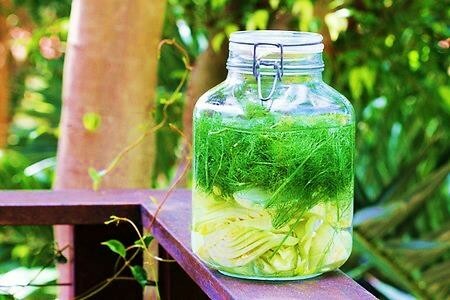
Dill
Dill is rich in vitamins( B1 and B2, P, PP, C), folic acid, essential oils, flavonoids, and minerals( iron, potassium and calcium).And in medicine it is used in such cases:
- diseases of the genitourinary system: puffiness, cystitis, inflammation, stones and sand in the kidneys;
- heart disease and blood vessels: heart failure, stenocardia at the initial stage, arrhythmia, fluctuations in blood pressure;
- disorders in the nervous system: insomnia, increased excitability, depressive states, nervous vomiting and neuroses;
- dysfunction of the digestive system: spasms, loss of appetite, pancreatitis;
- allergic manifestations on the skin.
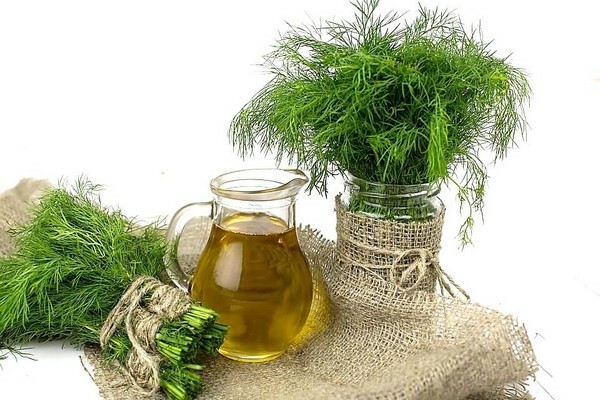
Recipes with fennel and dill
- For spasms in the intestines, bloating and flatulence. A teaspoon of dried leaves and fennel fruits pour 250 ml of steep boiling water and leave for 20 minutes, then filter and take three times a day before meals.
- For losing weight. Put 2 teaspoons of fennel and green tea seed into the brewer, add a lemon slice and pour 350 ml of boiling water. When the mixture is infused, it must be filtered, divided into several receptions and drunk before eating.
- From hemorrhoids. Pour boiling water fresh leaves of dill, immediately drain the water, green a little cool and apply to the affected area. Such compresses will help to remove itching and reduce inflammation.
- For diseases of the urogenital system. Pour a teaspoon of dill fruits with 250 ml of boiling water and leave for 20 minutes. Take several sips a couple of times a day. This drug will help remove excess fluid from the body and remove swelling.
The main differences
Given the above, you can clearly tell what distinguishes fennel from dill:
- each has its own flavor and characteristic taste qualities - fennel has a spicy taste, and dill can be recognized by its intense smell and rich taste, which is inherent only in this plant;
- fennel must be planted every year, as it is annual, fennel has a powerful root system, and it will appear on the bed for at least two consecutive years after planting;
- there are obvious differences in appearance and care - fennel is much higher, they plant it later, and dill is much less fond of conditions, as it is able to tolerate easy frosts, and to care;
- also differs in the chemical composition of seeds and leaves, because of which each plant has its own specific, and therefore they are used in the treatment of diseases of various etiologies.
Now you know what the difference between fennel and dill is. However, there is a similarity - it is a plant-healers, who, if properly applied, are able to protect you, and if necessary, and cure many diseases. Cultivate them on their sites and replenish the treasury of health!
